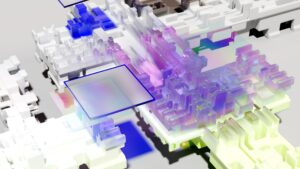All about augmented intelligence
Recently, augmented intelligence has been raising questions. Offering a compromise to artificial intelligence, it leaves room for the human being and his decision-making capacity.

The world is currently facing an unprecedented digital revolution. This revolution concerns almost all fields of activity, from transportation to defense, aeronautics, education and health. For some time, public attention has been focused on the potential offered by artificial intelligence (AI). But recently,augmented intelligence has also been questioned. Indeed, it offers a compromise to AI and reduces its risks, while still leaving room for the human being and its decision-making capacity.
What is augmented intelligence?
Augmented intelligence is a combination of non-autonomous technologies such as machine learning, deep learning, external cognitive sensors or big data. The machine learning aims at teaching machines to read data, exploit it and improve with experience, instead of being explicitly programmed to do so. The deep learningconsists in imitating the functioning of the human brain thanks to artificial neural networks. In other words, the algorithms mimic the actions of the human brain.
Thanks to all these scientific techniques, the role of augmented intelligence is to reinforce human intelligence. Contrary to popular belief, there is no question of replacing it. These technologies are based on a responsible use of AI. Augmented intelligence is an effective tool that expands human potential, ideal for helping in decision making.

Artificial neural network ©deepmind unsplash
Augmented intelligence and artificial intelligence, what is the difference?
Augmented intelligence is the extension of artificial intelligence. The two technologies differ in the degree of human interaction.
Indeed, AI aims to replace human intelligence entirely by imitating the functioning of the human brain. But, until now, its role is essentially limited to saving humans from time-consuming and repetitive tasks.
Augmented intelligence, on the other hand, is intended to support human intelligence rather than replace it. This implies that the interpretation of the data analyzed by the technological tools also falls to the human being. Augmented intelligence is therefore the result of a complementary work between man and machine.
What are the fields of application for augmented intelligence?
The fields of application of augmented intelligence are various. It can be used in all activities that involve the use of complex data in large quantities. Augmented intelligence allows to establish links between different domains.
Augmented intelligence and health
In the field of health, augmented intelligence is of real interest to professionals in the sector. Indeed, it allows toanalyze millions of data related to health in a short time, such as symptoms and diseases of many patients.
For example, this may be data about physiological signals, collected and transmitted by sensors. By analyzing the huge volumes of information quickly, the technology allows the medical team to prioritize patients in need of immediate care or to speed up diagnoses.
Augmented intelligence applied to the transportation field
In the transport sector, AI, which provides the foundation for augmented intelligence, makes it possible to collect all the information relating to traffic. Then it enables optimal decisions to be made to improve traffic flow. Augmented intelligence is also used in aviation autopilot systems . Pilots ensure take-off and landing with the help of the machines, while also acting as supervisors.
Augmented intelligence and industrial domain
The application of augmented intelligence in the industrial sector is mainly related to theautomation of the production process. Here again, employees supervise each step.

pexels-thisisengineering
Online sales and augmented intelligence
In e-commerce, the technology tool collects and analyzes data to predict customer preference, allowing companies to adjust their strategy to boost sales. It is worth noting that, in general, companies using Big Data have an interest in using augmented intelligence. This allows them to form predictive models that are a great help in decision making.
How is augmented intelligence useful?
Human capacity for data processing may be limited. Errors can occur due to fatigue or distraction. With massive amounts of data, it is quite possible to miss essential information. This is where augmented intelligence comes in, thanks to machine learning and deep learning, among other things. It will process data quickly and accurately thanks to perception and filtering capabilities, exceeding human intelligence. Combined with the latter, this form of intelligence makes it possible to make decisions more efficient and more informed.
The usefulness of augmented intelligence lies in the fact that it has the capacity to amplify man-machine collaboration. It allows man to have at his disposal tools allowing him to refine his interpretation, judgment and problem solving abilities.
What are the issues related to augmented intelligence?
A common perception is that artificial intelligence will eventually replace human beings in various fields. However, this is tantamount to doubting human capabilities. In fact, the challenges related to AI and augmented intelligence lie rather in their capacity to amplify human creativity and foster innovation.
Indeed, this type of technology is bound to introduce innovative solutions reinforcing human performance in different sectors. Moreover, with AI, new socio-economic opportunities will constantly emerge. The main challenge here is not to negatively impact or even restrain human creativity through the concept of automation.
With its 40 years of engineering expertise, AMEG Group works at the heart of these challenges. Our teams are here to support you in these transitions and provide you with innovative solutions. Contact us for more information.

